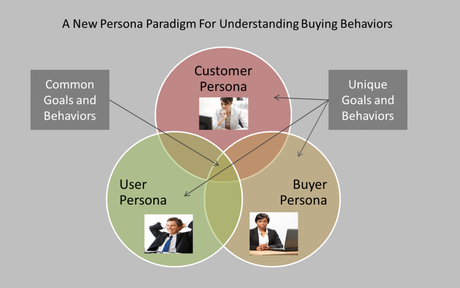 I came across a word recently, which made me pause from busyness and think. It is a word many of us have heard. Perhaps we have not heard or seen this word in this form but in one form or another. The meaning of this word, in many ways appears to be describing an impact of the digital age for B2B as well as B2C businesses.
I came across a word recently, which made me pause from busyness and think. It is a word many of us have heard. Perhaps we have not heard or seen this word in this form but in one form or another. The meaning of this word, in many ways appears to be describing an impact of the digital age for B2B as well as B2C businesses.
This word is: Intersectional
This is the adjective for the word intersection. We tend to know this word in terms of streets and roads, which intersect. The rise in digital technologies is changing buying and usage behaviors in business -and creating new intersections. What use to be clear lines of separation prior to the digital age when it came to buying and usage are now – using a variation of this word – intersecting.
Understanding Buying and Usage
This perspective is becoming increasingly important. With digital technologies creating new intersections between buying and usage, it means becoming more knowledgeable about buying versus just an elementary focus on who is the single buyer. Influence and decision-making has become radically different and are not as clear-cut as they used to be.
This leads me to buyer personas. Much of what I see today with respect to buyer personas is still rooted in basic elementary product marketing views. Mostly, making attempts at figuring out who is the single buyer. With a narrow focus on out-dated as well as jargon filled perspectives such as buying criteria. This narrow focus is taking place in the world of product marketing and content marketing today. Leaving out an important intersectional development occurring in the new digital age.
A New Persona Paradigm
The main fundamental purpose of research-based personas is to gain deep insight and understanding into goal-directed behaviors. This helps us to understand as well as map to how buyers use solutions and why they are important to them in terms of accomplishing goals. Digital technologies, which are creating new forms of collaboration, are bringing three persona groupings to an intersection. All three influencing and impacting purchase decisions and behaviors:
Buyer Personas: This persona grouping should be focused on the goals and behaviors of new buyers – prospects. Understanding the scenarios by which buying is initiated and takes places allows us to better craft customer acquisition strategies. With the increase complexity and more participants in buying decisions, this is critical understanding organizations need in order to grow.
Customer Personas: The goals of existing customers can vary greatly from potential new buyers. Understanding the mindset and goal-directed behaviors of existing customers is important to customer retention. Many organizations, when it comes to personas, are not making this distinction in their personas. Applying to prospecting and existing customers one generic buyer persona.
User personas: The origins of personas are traced back to the development of user personas to inform product and software design. This is still an essential primary purpose. In the context of buying behaviors, I have previous written about the rise in user influence in purchase decision. This is a direct result of new digital technologies empowering users. And, digital technologies are also moving up the ladder whereby key decision-makers are both users as well as buyers – becoming eventual customers.
Interdependency
For decades, business thinking has tended to look at users and customers as distinctly separate. Strategy and operations were organized towards separate efforts around training and purchasing. Often, treating existing customers and prospect buyers as one in terms of how to market and sell. The advent of new digital technologies is creating a new set of behaviors and calls for a new paradigm along these lines:
- Businesses need to understanding how buying and usage behaviors differ between customers, buyers, and users
- Recognize each will have unique and distinct goals to be accomplished
- Recognize all three are bonded by connectivity through new forms of collaboration made possible by digital technologies
- Recognize all three now coexist in a stronger form of interdependency than ever before
- These new dynamics are changing the dialog and conversations B2B marketers and sellers need to have with organizations. This is especially true when marketing and selling to organizations where all three groups exist due to being a global company with multiple divisions.
The New B2B Persona Manifesto
For B2B companies to distinguish themselves in the future, they will need to evolve their conversational abilities with all three groups. How B2B businesses speak to each group will matter more so.
In some cases, particularly when it comes to buyer personas, I have seen companies focus on a narrow conversation with prospect buyers and attempt to engage existing customers in the same conversation. At the same time, be oblivious to the rising influence of users in buying decisions – only perceiving this group as subjects of training or professional services.
The new manifesto now is to transition from a one-dimensional view of buying to a persona-based three-dimensional view.

This will especially be true for the tactical function of content marketing as well as lead management. Here’s why:
- Users are exploring options to be more effective and make recommendations
- Customers are looking within a context of how to be more productive with what they have
- Prospects buyers are seeking new ways to fulfill goals and solve issues
B2B companies, in the digital business environment, will need to make available content and information, which enables a dialog with all three. At the same time, do so in a very shareable way. Meaning, in a way enabling dialog and sharing among all three groups.
Common Versus Unique
A new best practice for B2B organizations will be to both uncover and speak to common goals as well as unique goals. With common goals being the intersectional point. Whereby making it possible for all three persona groupings to share and collaborate.
The implications can be quite profound for marketing and sales functions. This is particularly true for those aiming content marketing entirely at the concept of a single buyer. I am going to leave this point to a voice heard in a recent interview:
“It seems once you become a customer, there is a lack of help or perspective on getting the most out of what you have implemented. Perhaps even how to improve or add to. You are forced to call for that. Everything on their site is for new sales.” Senior Director, Distribution Operations
This quote sums up the importance of dialog with B2B organizations. If a company fails to mesh into the intersecting overlap of customer, buyer, and user – focusing only on the buyer – they will remain on the outside looking. Adopting a new B2B persona paradigm of understanding how these three persona groupings now collaborate with new buying behaviors help companies to meet at the place where – using the root word we started with – intersect.
 Tony Zambito is the creator of and today’s leading authority on buyer personas. In 2002, Tony established the first-ever buyer persona development methodology designed specifically for B2B Marketing and Sales. This innovation has helped leading companies gain a deeper understanding of their buyers resulting in improved business, marketing, and sales strategies. Over the past dozen years, Tony has conducted hundreds of buyer interviews and has helped some of today’s leading Fortune 100 companies acquire deep buyer insights, providing him with a pulse on rapidly changing buying behaviors in the new digital age.
Tony Zambito is the creator of and today’s leading authority on buyer personas. In 2002, Tony established the first-ever buyer persona development methodology designed specifically for B2B Marketing and Sales. This innovation has helped leading companies gain a deeper understanding of their buyers resulting in improved business, marketing, and sales strategies. Over the past dozen years, Tony has conducted hundreds of buyer interviews and has helped some of today’s leading Fortune 100 companies acquire deep buyer insights, providing him with a pulse on rapidly changing buying behaviors in the new digital age.
This post originally appeared on Tony Zambito Blog
Are You Marketing To A Buyer Persona Only? Why This May No Longer Work. is a post from: V3 Kansas City Integrated Marketing and Social Media Agency

